Solan
Solan is the universal language of nearly every humanoid at the surface. It began as a sort of pidgin language, comprised of words, phrases, and grammar of the languages of its speakers. The etymology of many words can still be traced back to a home species' language of origin.
Solan is taught to younglings alongside their native tongue, but it is nevertheless not considered a language one can be native to. Solan is a communal language, built and spoken to facilitate communication across the world, it has no home species and thus no individual can claim it at their own- preventing anyone from identifying it as a native tongue. It is universal in a way that prevents it being a home language.
It is logographic, each character representative of a meaning rather than a sound. There is no phonetic-based writing system of Solan, as it was built in antiquity from the meanings of its ancestor languages (ie: the old species' tongues). Both old species' languages and Solan have evolved since then, as such, Solan is no longer a pidgin of sunling languages, but its own.
It's written top to bottom- a compromise: Montaran, Paitarō, and Homonic are written left to right, but Arbur is written right to left. A writing style dictated by the majority- left to right- would place satyrs in a unique position of having to adapt a new writing direction while humans, fauns, and ipotanes don't, thus giving them a literary disadvantage. Thus, it was decided Solan would read top to bottom, for equity's sake. It can also be written either left to right or right to left, but to most efficiently function as a universal translation, top-bottom writing is the most correct.
Logograms and Phonetics
Solan's most common phonemes are those that are found in most or all sunling languages, with a few that are only present in one or two ancestor languages. Solan does, though, feature the glottal stop- a sound that is mostly absent from other sunling languages.
Old Solan- a broadly similar but younger and more pidgin-like version of Solan- was written mostly by printing1. However, this becomes increasingly difficult, time-consuming, and resource-heavy as the number of characters increases. Thus, modern Solan is mostly painted, like Homonic2. Old Solan is therefore a more straightedged, simpler-charactered version of the writing style of modern Solan. Modern Solan has many more characters than Old Solan, created as needed to translate concepts from species' home languages, to address new concepts in a changing world, or simply to expand the language beyond the limited scope of its original pidgin. Newer characters tend to be more complex.

This is not a 'Solan alphabet.' Solan, as a logosyllabic language, does not have an alphabet. The above characters each represent one of the 32 main phonemes of the language. At the bottom left of each cell is the meaning of the character, at the bottom right is the romanized pronunciation, with the phoneme it represents highlighted in yellow. Characters may be combined in a single word to take on new, related meanings- eg. ![]() means harbor, derived from the characters for ship and city- but they may also be combined within a single, new character- eg.
means harbor, derived from the characters for ship and city- but they may also be combined within a single, new character- eg. ![]() means blight.
means blight.